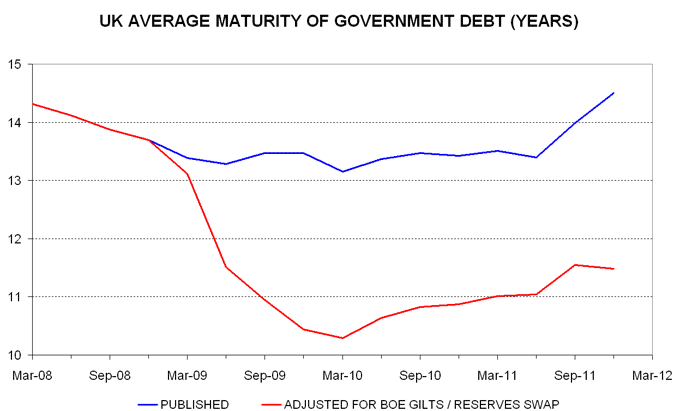The 100-year “Osborne bond” is intended to “lock in” low long-term borrowing costs by extending the average maturity of the public debt. Any such impact, however, will be small relative to the reduction in the effective maturity of official liabilities stemming from the Bank of England’s QE programme.
According to the Debt Management Office (DMO), the average maturity of gilts and Treasury bills outstanding was 14.5 years at the end of 2011. This figure, however, includes about £275 billion of gilts held by the Bank of England, representing 21% of the stock of debt held outside the DMO.
The market has, in effect, exchanged these gilts for zero-maturity central bank reserves. The relevant metric for assessing refinancing risk is the average maturity of the market's combined holdings of debt and reserves, not that of the stock of debt including the Bank's gilts. This “effective” maturity is estimated to be 11.5 years currently, down from 13.7 years at the end of 2008, just before QE started – see chart. (The calculation assumes, reasonably, that the average maturity of the Bank’s holdings matches the outstanding stock of debt.)
The effective maturity will fall further to an estimated 10.7 years when the Bank completes its £325 billion QE programme, assuming no other changes.
The Bank of England pays Bank rate on reserves. This results in an interest saving when Bank rate is below the initial yield on purchased gilts, as at present. The Bank, however, could be forced to tighten monetary policy aggressively in the event of a funding or inflation crisis. This would be instantly reflected in the combined government / Bank interest bill.
The UK's "true" debt maturity is still significantly longer than for other major countries but QE has eroded the advantage and will swamp the impact of any “Osborne bond”.